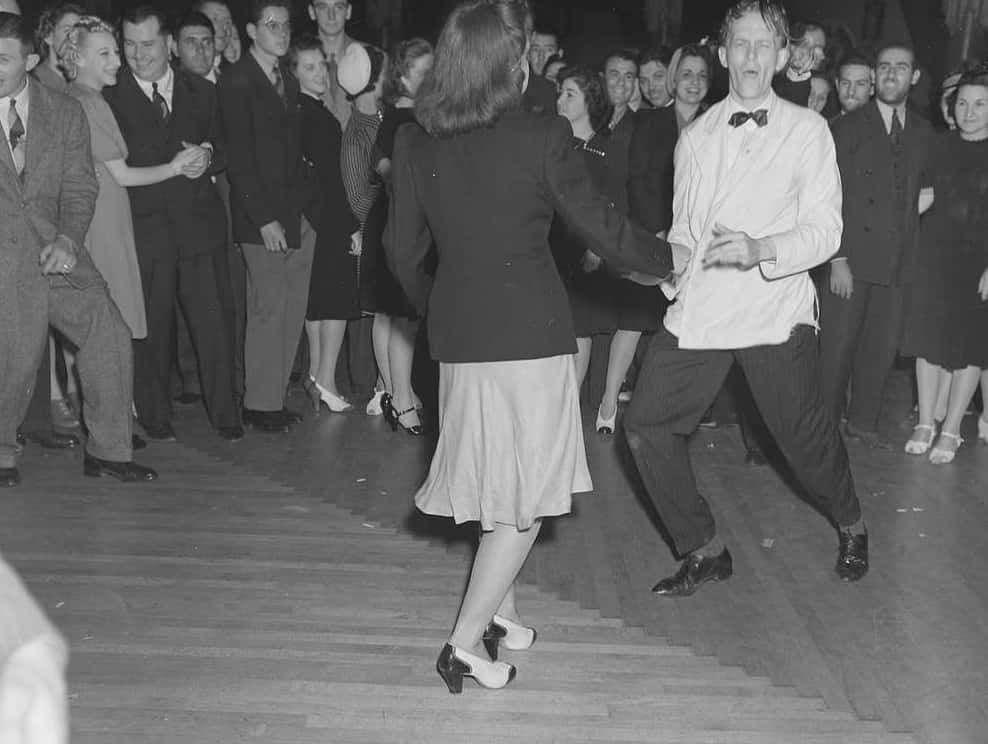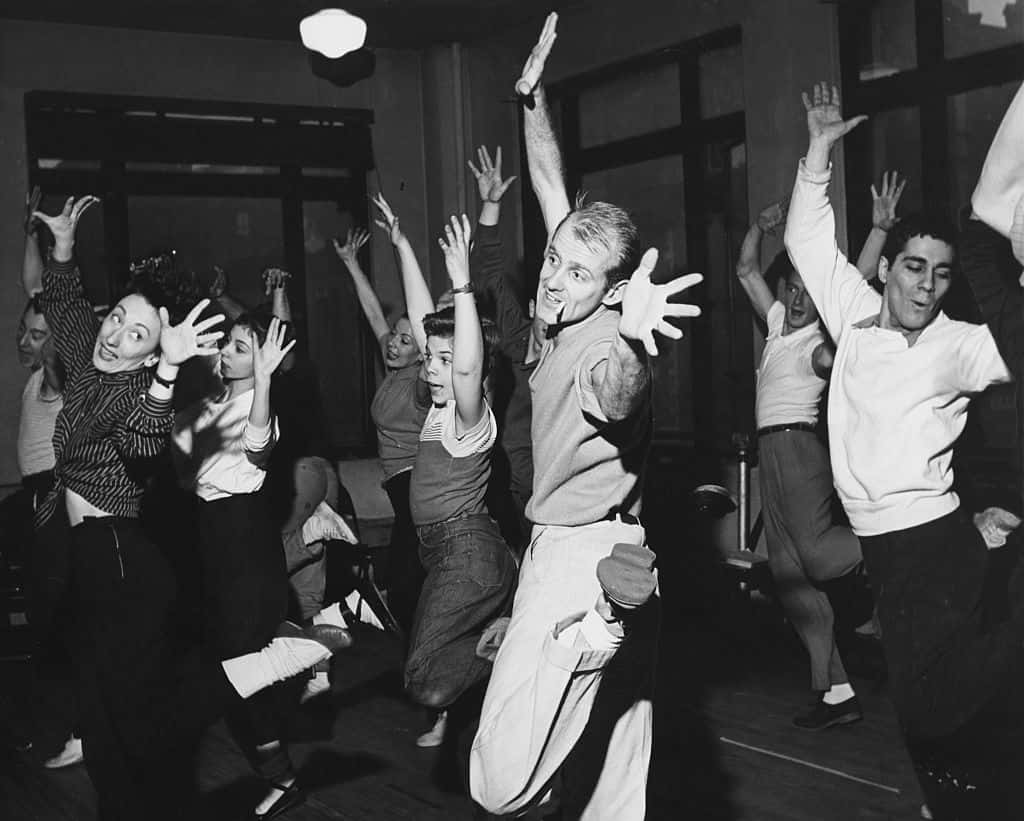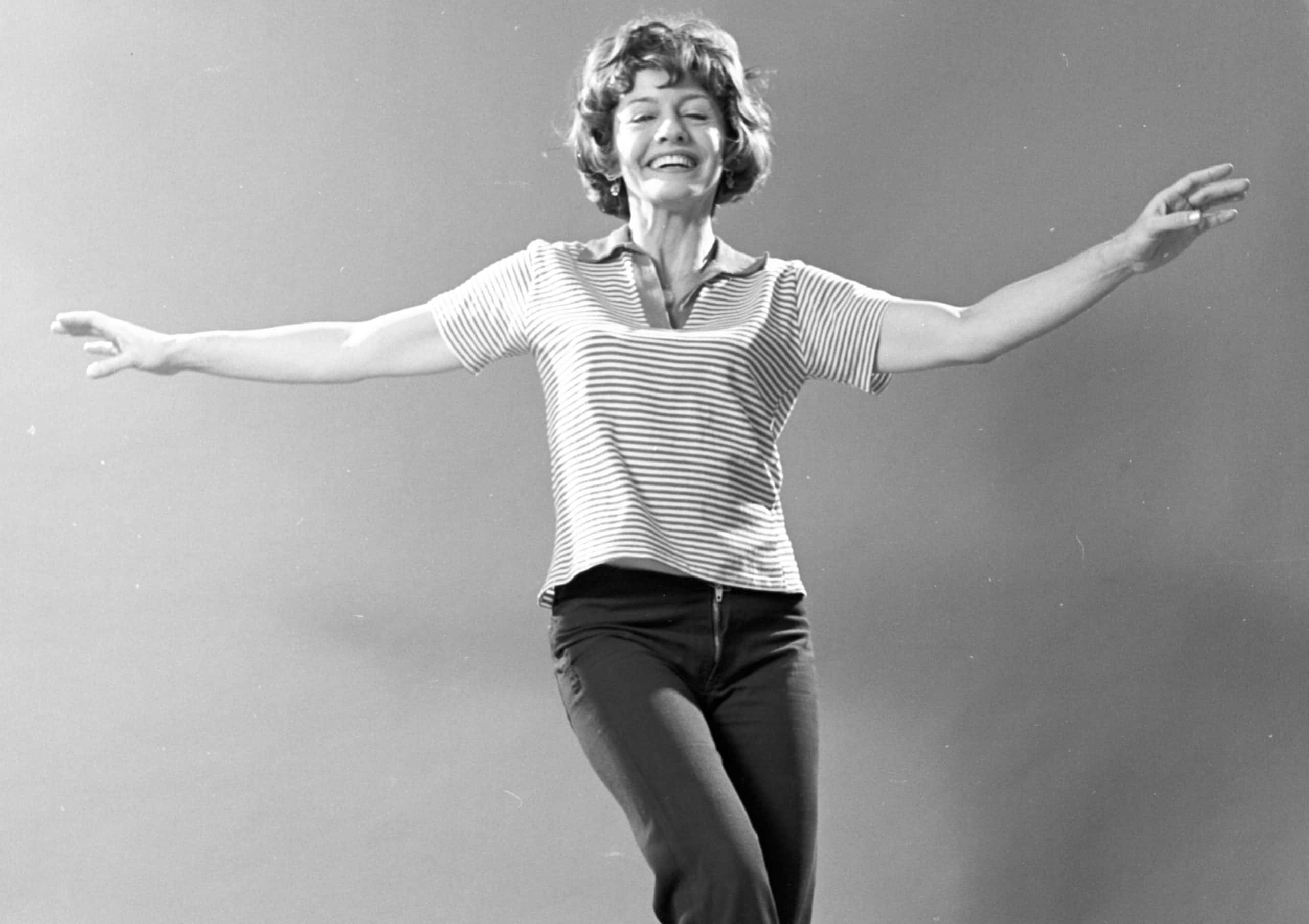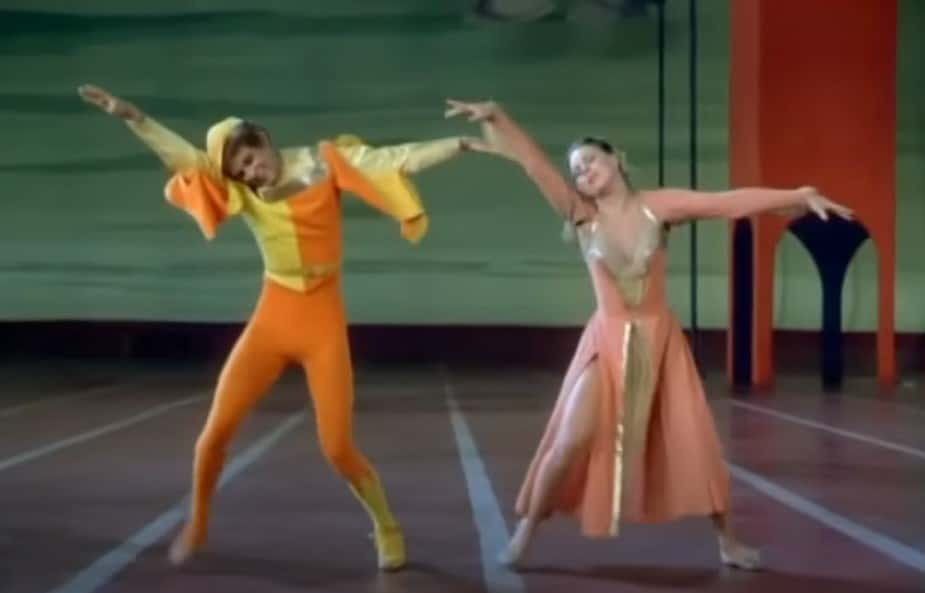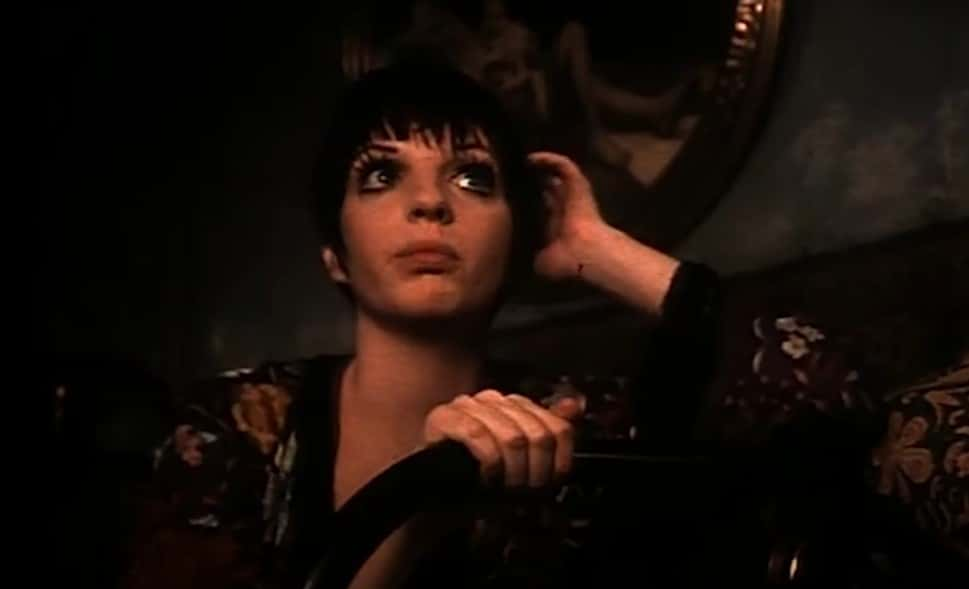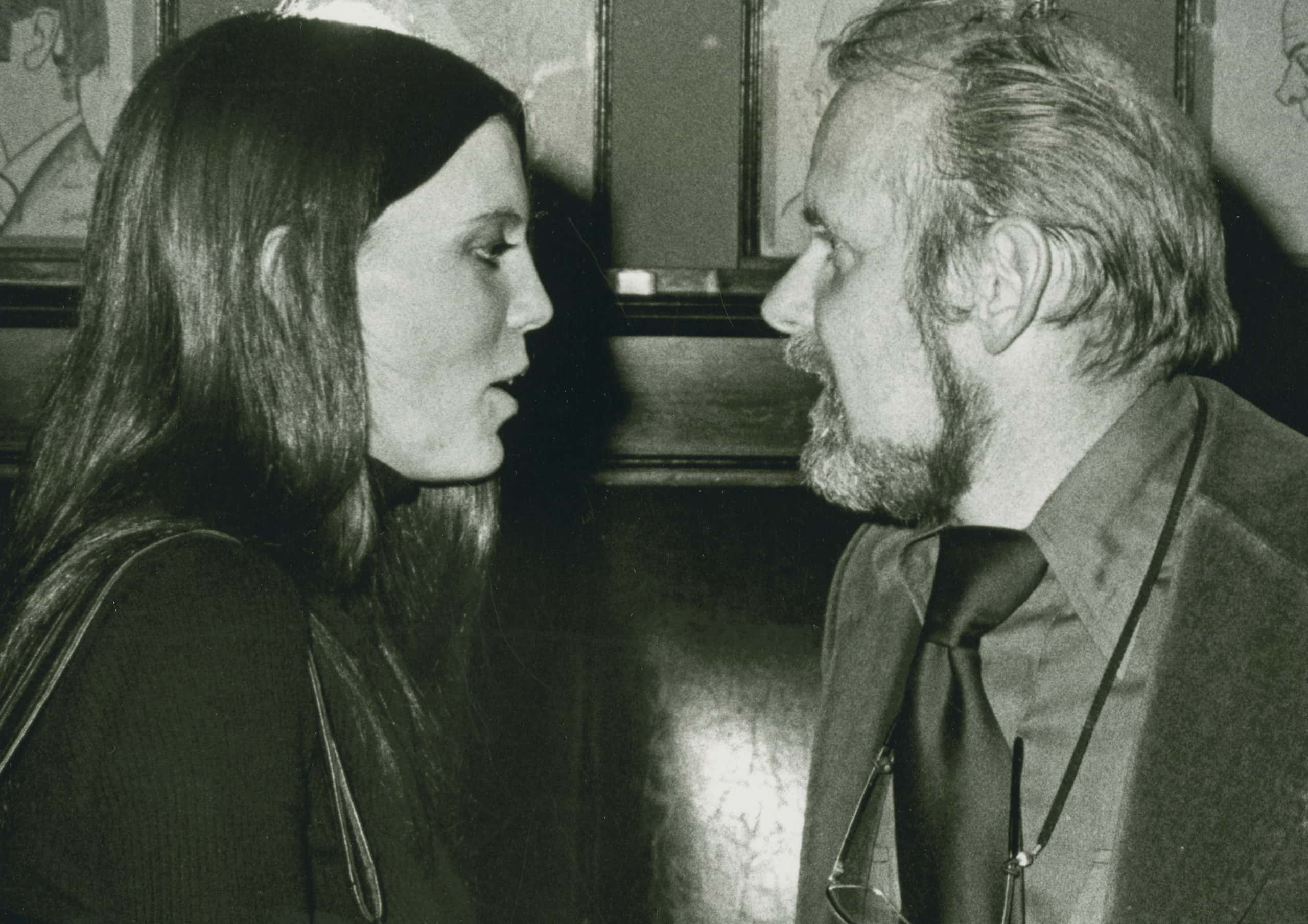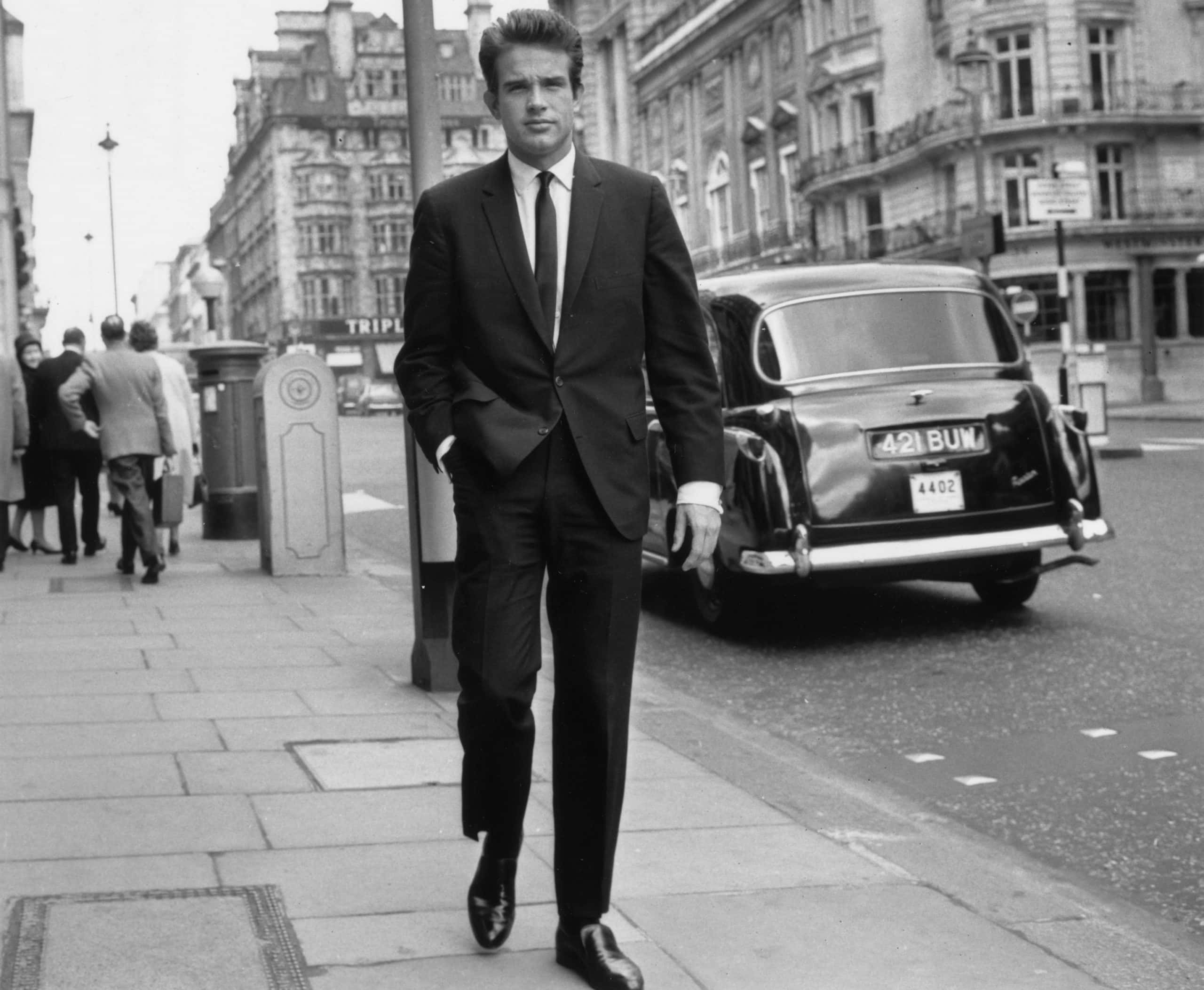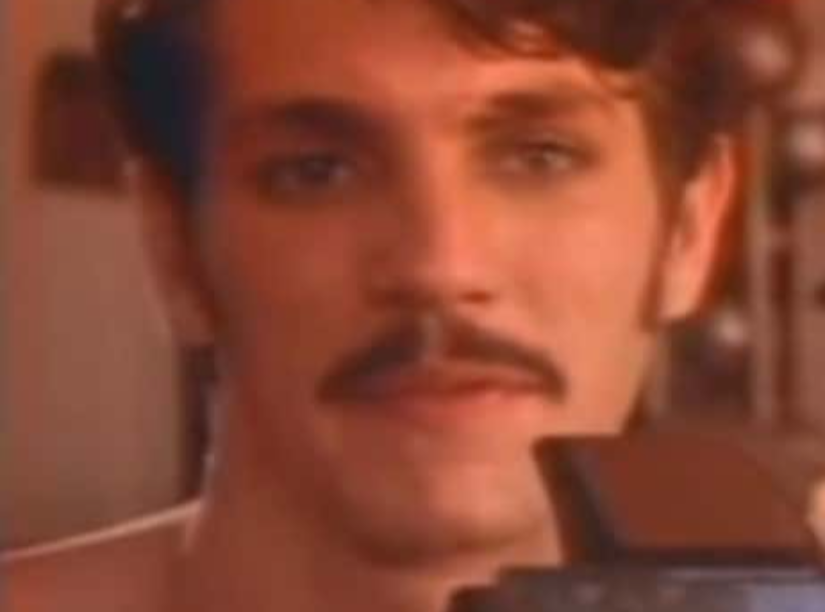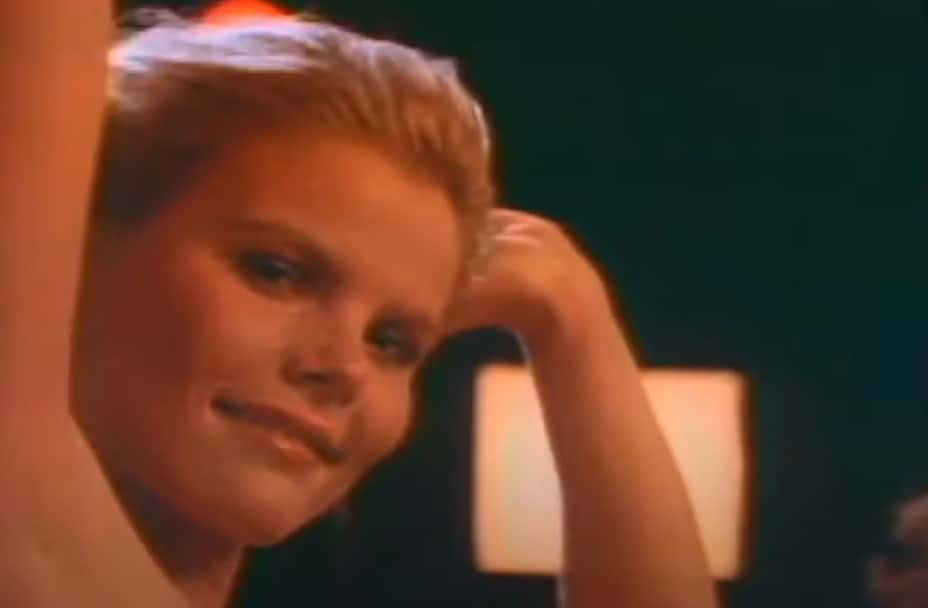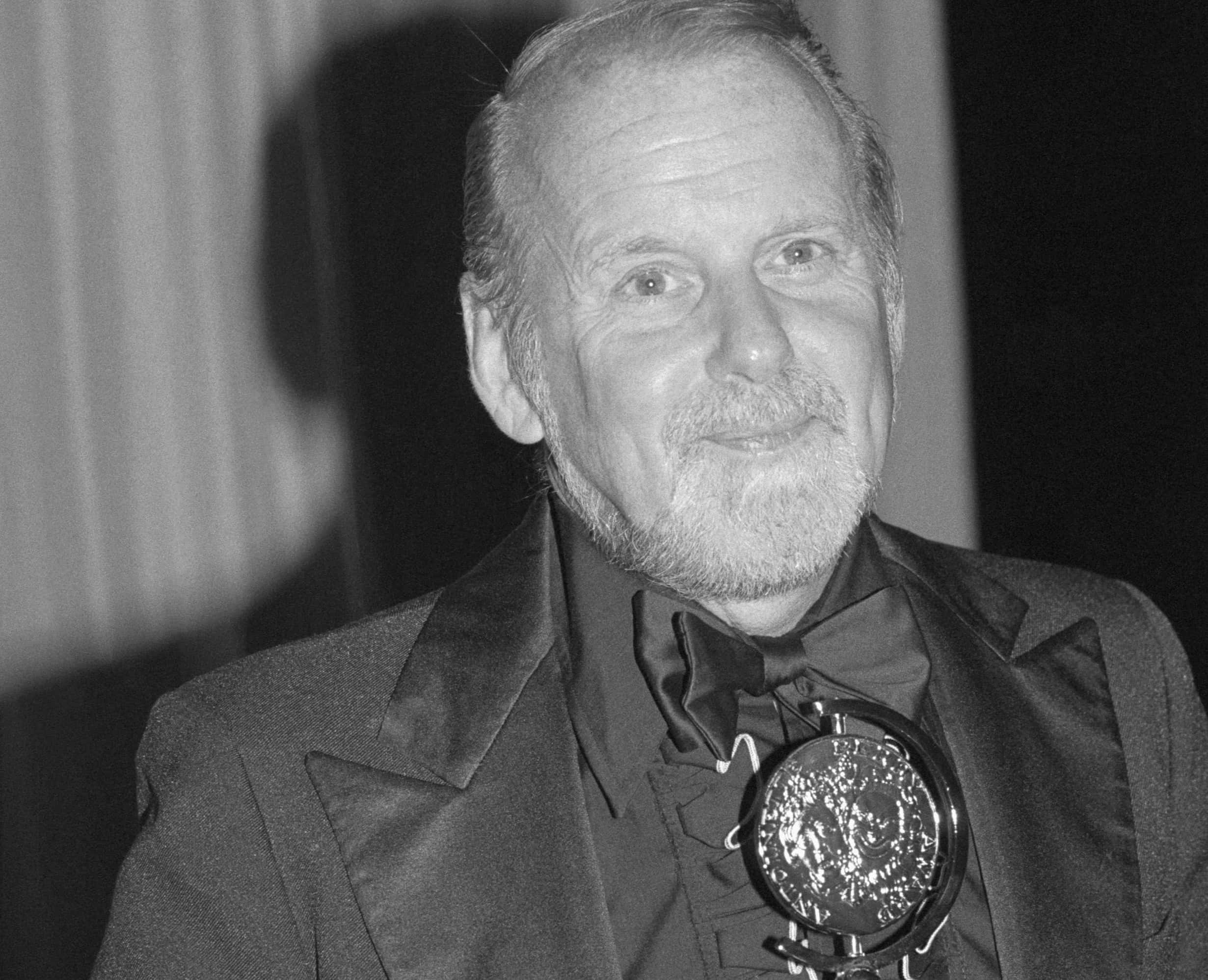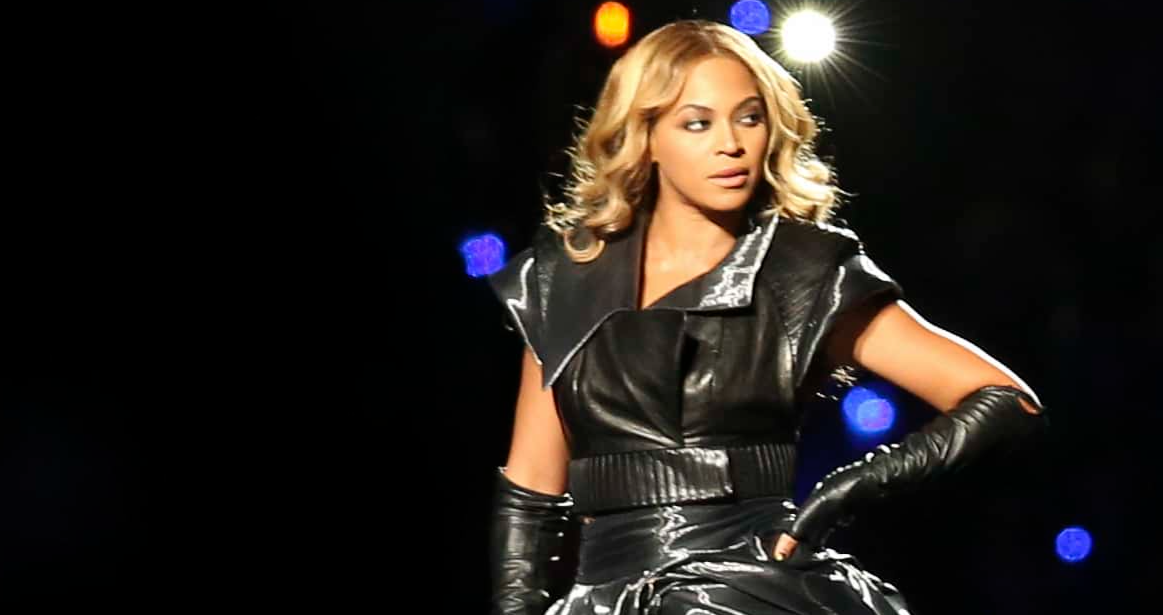“Jazz hands” may be the most mocked gesture in show business, but you've only heard of them because of choreographer Bob Fosse. Let’s not, however, write off Fosse as a jazz hands flashing hack. What do Britney Spears, Lady Gaga, and even Beyonce herself have in common? Without Fosse, these ladies would just be standing on a stage singing. Bob Fosse was one of the most influential people in show business—but his talent came at a horrible price.
1. He Got An Early Start
Bob Fosse was the fifth child of six, born on June 23, 1927 in Chicago Illinois. His father had one of the few jobs that likely brings joy to children: He sold chocolate. We don’t know whether or not Mr. Fosse brought his work home with him; what we do know is that the younger Fosse took to dance at a very early age. By 13, he was already performing on stage as a professional dancer.
It was an unlikely path for the Chicago teenager and boys teased him for it—that is, until they learned the dirty details.

2. It Wasn’t Fit For A Teenager
Fosse was barely a teenager when he joined The Riff Brothers. This group of performers toured extensively in movie theaters, Eagles Clubs, and vaudeville houses. It was, however, in these burlesque clubs where Fosse met with trouble. By this time burlesque had become quite raunchy and included scantily dressed female performers. Once the performers got backstage, they seemed to forget that Fosse was a 13-year-old boy, and their behavior shocked him.
It wasn’t, however, just what Fosse saw that harmed him.
 Great Performances (1971-), PBS
Great Performances (1971-), PBS
3. It Was Actually Worse
Yes, Fosse was too young to be in burlesque clubs, and yes he saw some things he shouldn’t have seen. It was, however, actually much worse than that. There are reports that say these female dancers did more than tease the young Fosse: He had his first sensual experiences with these women when he was still 13 years old.
What kind of effect would this experience have on the man he would become? Well, we don’t have to wait long to find out.
4. He Did It Alone
By the age of 15, Fosse was already choreographing dance numbers all by himself. While most boys his age were spending their time with sports or stamp collecting, Fosse was dealing with showgirls wearing strapless dresses while doing a titillating fan dance. His years as a teen amongst the burlesque crowd had certainly had an effect on Fosse. They made him the fearless performer he became—but they also fueled his dark side.
But wait, he couldn't have spent all his time in dance clubs. What about his education?
5. It Was A Shock
Even though Fosse was busy in show business, he still managed to graduate from high school. Sadly, his graduation happened at the same time as something awful: the beginning of WWII. The army needed men, and Fosse was exactly the right age. It was the United States Navy that got Fosse, and they sent him to the Naval Station Great Lakes where he prepared to fight for his country. Fosse had quickly gone from being around scantily clad women to wearing a drab uniform with a bunch of men.
Fosse didn’t like army life one bit, and he was willing to try anything to get out.
6. He Wanted Out
Fosse was soon complaining to his superiors that he belonged in the Special Services Entertainment Division. His direct superior didn’t share Fosse’s opinion—maybe he wasn’t a fan of dance. Fosse then got a hold of his agent and begged him to get him out of the army. I guess Frederick Weaver had a more compelling argument, as he got Fosse out of the barracks and onto the stage.
After a brief intermission, Bob Fosse was back where he belonged.
7. He Made A Big Move
When Fosse was finally free of his obligation to Uncle Sam, he made a decision: He wanted to be the next Fred Astaire. Fosse already knew he could dance like Astaire, but he knew he couldn't act to save his life...yet. To master that craft, he moved to New York City and studied acting. Apparently, he was also studying the women in the class, because he soon fell in love.
But here's something you'll soon learn about Bob Fosse: Falling in love was never a good thing.
8. They Weren’t Traditional
Mary Ann Niles was Fosse’s scene partner, dance partner, and then his wife. The two wed on May 3, 1947 in Detroit, but they spent little time setting up a traditional marriage. They were too busy performing together on stage and on the small screen. They danced on Your Hit Parade and The Colgate Comedy Hour. In 1953, when executives at MGM saw them perform, they offered Fosse a contract.
The world was finally starting to take notice of Bob Fosse, and he wasn't about to slow down any time soon.
9. He Made A Switch
In 1950 Fosse was working as a specialty dancer on Dance Me A Song. Fosse took one look at the lead actor, funny lady Joan McCracken, and decided he wanted her for himself. The two hit it off and, in order to move it further, Fosse divorced Niles and married McCracken. He left Niles in the rearview and set off for marital bliss with McCracken...but it was only a matter of time before this marriage went up in flames as well.

Sign up to our newsletter.
History’s most fascinating stories and darkest secrets, delivered to your inbox daily. Making distraction rewarding since 2017.
10. He Rose To Stardom
With help from McCracken, Fosse soon had dancing roles in musicals like The Affairs of Dobie Gillis and Kiss Me, Kate. He was also beginning to choreograph musicals. His first was The Pajama Game, and nobody was calling it beginner's luck when he won his first Tony Award for his work. All this was a preparation of sorts. Fosse was rising, and he was about to gain the kind of exposure he’d been waiting for—and his next romantic conquest.
11. They Called Her A Snob
In 1955, Fosse was choreographing the stage musical Darn Yankees. Sure his fame was on the rise, but it was nothing compared to the leading lady of this musical. Gwen Verdon had already won a Tony, and she was a pretty big star because of it. She also had a reputation for having incredibly high standards; some even called her a snob. As her choreographer, Fosse certainly had his work cut out for him.
12. Sparks Flew
Fosse had a reputation for being stubborn and picky, so when he worked with the difficult Verdon, it wasn’t surprising that a few sparks flew. But anger and passion are two sides of the same coin. Both of them felt the electric tension between them, but Fosse was still married to McCraken, whose diabetes had gotten much worse. So, instead of acting on their romantic feelings, they did something else.
13. They Met At Night
Obviously, Fosse couldn’t be with Verdon in the way he wanted—at least not without betraying his sick wife back at home. Instead, the two worked on choreographing her dance scenes from the show. Of course, there was a lot riding on the cooperation between Fosse and Verdon. Fosse suggested that they work on the dance at a studio and arranged to meet her there at night.
14. He Laid Himself Bare
Fosse met up with Verdon at a rehearsal studio. Their plan was to create the choreography for a scene where Verdon’s character, Lola, seduces the male lead, Joe. When these two passionate people got together to create art, there was a lot of tension in the room. Fosse wanted to break the tension so he laid himself bare. He told Verdon that he was very nervous. Surely this was a bad move. Verdon would eat him alive.
15. They Didn’t Hold Back
Verdon surely had the upper hand. Her choreographer had just admitted how nervous he was to work with her. Instead of taking advantage, Verdon simply replied: “Me too". Fosse decided he would show Verdon the choreography he’d created for Lola. Of course, the routine was for a woman, and it was also meant to seduce.
For Verdon, it was very successful. She loved the choreography, and she was definitely interested in Fosse. It was only a matter of time before their steamy romance began to leak off of the stage.
16. They Were A Hit
The dance number that Fosse created with Verdon surprised and thrilled audiences. It had a new kind of sensuality and it was a big hit. Something was very clear: The working team of Fosse and Verdon had to continue. Unfortunately, this meant disaster for Fosse's ailing wife: Fosse/Verdon could not simply remain a business partnership. The two were likely already in love.
17. They Were A Pair
Fosse and Verdon paired up on stage and in film. Verdon was picking up Tonys left, right, and center with her favorite choreographer always by her side. Somehow Fosse’s marriage to McCraken carried on, in spite of the obvious Fosse Verdon pairing. Well, the two had managed to keep their romance mostly under wraps until now. That was about to change.
18. She Helped Him
Verdon’s next project was going to be the musical Redhead. The writing team of Redhead had something very clear in their minds while writing: They knew that Verdon would be the best to play the lead. Verdon got the offer and then made a surprising condition. She would only appear in Redhead if Fosse directed and choreographed. Her decision paid off. Redhead earned six Tony Awards, including one for herself.
19. He Got The Ax
In the middle of all this, Fosse faced a controversy that even reached Congress. The show was The Conquering Hero, and Fosse decided to have some Marines do a pas de deux—a dance usually reserved for mixed couples. Audiences didn’t like this effeminate portrayal of US marines and complained. One representative in Congress said he didn’t like Marines acting like they were gay.
Instead of supporting Fosse, the producers of The Conquering Hero turned around and fired him.
 Great Performances (1971-), PBS
Great Performances (1971-), PBS
20. It Was Painfully Obvious
It was around this time that Fosse’s marriage fell apart. Likely McCraken had known about Fosse’s relationship with Verdon for a while, but now it was so painfully obvious. It could be that McCraken had finally had enough. Or maybe Fosse had grown tired of caring for McCracken, whose diabetes was getting worse.
It certainly wasn't a good look for Fosse, divorcing his wife as her illness worsened—but he had eyes only for Verdon. At least, for the time being...
 Great Performances (1971-), PBS
Great Performances (1971-), PBS
21. It Was Just A Quickie
Less than a year after his divorce from McCracken, Fosse and Verdon got into a car and drove outside the city. The thing was, Fosse and Verdon wanted to have kids, and Fosse thought that they should be husband and wife. Verdon didn’t care either way, so she agreed to a quick marriage from a minister and had the minister’s son, just nine years old, as the only witness. Although his previous wives had both been singers and dancers, it was with Verdon that sparks truly flew.
They were together at last and Fosse could continue working with his leading lady, and now wife. It should have finally Fosse's happily-ever-after—but the man just couldn't hold onto a good thing to save his life.
22. She Had Regrets
Fosse and Verdon kept true to their promise and had a child in 1963: Nicole Fosse. With both parents so caught up in show business, who would be responsible for their new bundle of joy? To answer this question we need to understand where Verdon was coming from. When Verdon was just 18 years old, she had a son. At the time, Verdon had to make a painful decision: Who would raise her child? Verdon chose her parents and later regretted it.
To make up for her past mistake, Verdon decided to put her career on hold and become a stay-at-home mom. It was a selfless decision, if perhaps one that doomed their marriage.
 Great Performances (1971-), PBS
Great Performances (1971-), PBS
23. They Drifted Apart
For the years following Nicole’s birth, Fosse kept working on his career while Verdon spent blissful days at home with Nicole. During this time, Fosse and Verdon led very different lifestyles. Fosse was still out there dealing with both Hollywood and Broadway while Verdon enjoyed being a mom. Fosse had always suffered from some depression, but now he started to find different—mostly harmful—ways of dealing with it.
 Great Performances (1971-), PBS
Great Performances (1971-), PBS
24. He Used Pills
Scotch was Fosse's depressant of choice. When he wanted a lift to his mood, however, he used the amphetamine Dexedrine. It became a routine. A pill in the morning to wake up, one in the afternoon to keep going, and then, if he wanted to pull an all-nighter, another pill. There was also the drug that went up his nose when he wanted to feel a little more social.
All this intake of substances was, however, only one of Fosse’s problems.
 Great Performances (1971-), PBS
Great Performances (1971-), PBS
25. It Was Second Nature
Once Fosse had settled into having a wife, a child, and a career, he did something that was second nature: He chased women. Verdon was well aware of Fosse’s philandering. She once said that “women were his hobby". And that he was so bad that he even cheated on his mistresses. Verdon seemed unfazed by Fosse’s womanizing, and resolved to continue to be his wife, for better or for worse.
Which one do you think won out?
26. He Wanted To Cut It
Even though Fosse and Verdon had a peculiar relationship, they continued to work together. Next up was the musical Cabaret. But Fosse wasn’t happy making another musical. He had it in his mind that musicals wouldn’t get him the fame he wanted. His idea was to shorten the musical numbers in Cabaret and make it more of a drama.
He couldn’t have been more wrong.
27. He Was Wrong
Cabaret, complete with all the musical numbers intact, went on to win eight academy awards. Liza Minnelli and Joel Grey for acting, and Fosse himself for directing. Fosse had been wrong, and it led to his greatest-ever success. The public and critics went wild for the musical. And there was more: That same year, Fosse won an Emmy for Liza With A Z, a TV special with Minnelli. Then he won a Tony for his next musical Pippin!
No one had ever won those three awards in a single year before. Bob Fosse was on top of the world—but how long could he stay there?
28. He Met Another
When Fosse made the musical Pippin, he met up with a dancer named Ann Reinking. As with his previous love interests, his relationship with Reinking began as professional and then slowly—or perhaps quickly—got romantic. That’s how it was with Fosse. He loved his work so much that he was happiest when his work and love life combined.
Of course, he was still officially married to Verdon. There was, however, no reason why this should affect his other relationships. But then it did.
29. He Replaced her
Fosse’s life got real messy with the musical Chicago. At this point, Verdon had finished being a stay-at-home mom and was out working again. Their marriage had by then crumbled, but the two still managed to be friends and colleagues. Fosse was directing her in Chicago, where she was playing the lead character: Roxie Hart. In 1977, the role of Roxie Hart needed a change. Fosse’s wife, Verdon, was out and his girlfriend replaced her.
Now that had to be awkward.
30. He Was Living On the Edge
Everyone knew Fosse's schtick by now: He’d work on a project, fall in love with a performer, then dump her for the next one. People knew him as a hard-working man who, due to an unhealthy lifestyle—drink and drug issues—seemed to be living on the edge. While he was editing his film about comedian Lenny Bruce, he was also directing the original production of Chicago for Broadway. It was only a matter of time before something broke: That year, he suffered a heart attack.
If you think all this sounds like a great idea for a movie, Fosse thought so too.
31. It Was His Life
Fosse certainly wasn’t afraid of making his real life and art blur. In 1979, he made All That Jazz, a film about Joe Gideon: a “womanizing, drug-using dancer” who has a heart attack. No surprise, then, that in the original draft of the film, "Joe Gideon" was named...Bob Fosse. In the film, Gideon works with his ex-wife and gets romantically involved with various dancers, which seems a little on the nose.
There was only one problem: Who could possibly play Fosse better than Fosse himself?
 All That Jazz (1979), Twentieth Century Fox
All That Jazz (1979), Twentieth Century Fox
32. He Wouldn’t Survive
Of course Fosse wanted to play All That Jazz’s Fosse stand-in Joe Gideon. The producers, however, weren’t so sure. Wasn’t it a heart attack that had started this process? They thought that Fosse wouldn’t survive the filming, and Fosse had to reluctantly agree. They finally settled on Richard Dreyfuss, who had already wowed audiences in two blockbusters: Close Encounters of the Third Kind and Jaws.
But could the usually befuddled Dreyfuss play a believable womanizing choreographer?
33. He Didn’t Trust Him
Dreyfuss turned up for rehearsals with an incredibly difficult task ahead of him. He had to play a cinematic version of Fosse, the man who was directing him. The rehearsals progressed, but Dreyfuss seemed to have a problem. He eventually walked off the job. When Fosse asked him why, Dreyfuss said, "I don't like Fosse and I don't think he likes me".
It was probably true, but it left All That Jazz without a lead actor.
34. He Needed Someone
Fosse now needed a new actor to play Gideon. Columbia Pictures were hoping for a big name like Warren Beatty or Jon Voight, but Fosse had a different idea. He looked no further than Dreyfuss’s Jaws co-star Roy Scheider. There was certainly a physical resemblance between Fosse and Scheider. Still, Fosse wasn’t completely convinced. To be sure, Fosse asked something strange of the actor.
35. He Had A Strange Request
Though leaning toward hiring Scheider to play the lead in All That Jazz, Fosse needed a little something more to make sure he was the best choice. Fosse came to Scheider with a weird idea. Fosse said he wanted to spend a week with the Jaws actor. Scheider reluctantly agreed and, after a week of hanging out, Scheider got the job.
But getting the job was the easy part: Now Scheider had to sing, act, and dance like Fosse, in front of Fosse.
 Jaws 2 (1978), Universal Pictures
Jaws 2 (1978), Universal Pictures
36. He Was Terrified
Fosse was sure that his leading man, Scheider, had the acting chops, but could he dance? Fosse put his star to the test from the moment they began filming. Scheider’s first scene was a dance number with Joe Gideon's daughter. Scheider later said that he was terrified, but managed to somehow get through it. Fosse was impressed, and Scheider had the gig—but that was just the beginning.
Scheider had to learn much more than dancing, and Fosse was going to put him through the wringer.
 All That Jazz (1979), Twentieth Century Fox
All That Jazz (1979), Twentieth Century Fox
37. He Had A Lot To Learn
Remember, Fosse was a chain smoker, but Scheider’s lungs were still in pretty good shape. Because of this, Fosse insisted on teaching Scheider something all of us can already do: cough. Fosse wanted Scheider’s cough to sound like the real thing. He also taught Scheider something much scarier: How to have a heart attack.
 All That Jazz (1979), Twentieth Century Fox
All That Jazz (1979), Twentieth Century Fox
38. He Didn’t Like It
In one scene Joe Gideon has to pick out dancers from a cattle call, something that Fosse was clearly an expert at. Fosse didn’t like what Scheider was doing in the scene. He didn’t seem to know how to inspect a line of young hopefuls and pick out the best. Fosse finally came up with a solution. He rigged Scheider up with an earpiece and gave him directions as he did the scene.
 All That Jazz (1979), Twentieth Century Fox
All That Jazz (1979), Twentieth Century Fox
39. She Was Type Cast
All That Jazz features a character based on Fosse’s girlfriend Ann Reinking. When the real-life Reinking stepped up to play herself, it seemed like a casting dream come true. At least, it would be an easy audition for the seasoned performer—or so you’d think. It turned out that Fosse and the casting people made Reinking audition several times before they hired her...to play herself.
But there were even more shenanigans behind the casting of All That Jazz than that.
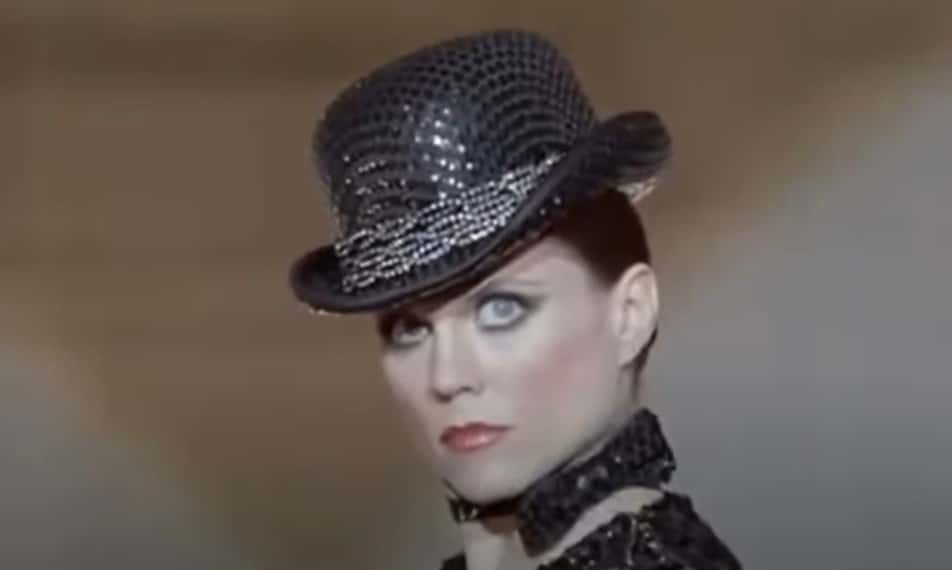 All That Jazz (1979), Twentieth Century Fox
All That Jazz (1979), Twentieth Century Fox
40. He Made Her An Offer
Fosse had seen 1976’s King Kong and had an idea for All That Jazz. Luckily, it wasn’t the gigantic ape he wanted; it was the ape’s co-star, Jessica Lange. When he’d called Lange to congratulate her on her performance with the ape, the two got to talking. As with many things in Fosse's world, talking led to something more horizontal. He had an affair with Lange and offered her a role in All That Jazz: The angel of demise.
41. He Didn't Get The Gold
All That Jazz sounded like a movie that should never work—but you should never underestimate Bob Fosse. It received nine nominations at the Academy Awards and legendary director Stanley Kubrick called the flamboyant picture “the best film I think I have ever seen". All That Jazz ended up with four wins at the Oscars and the Palme d’Or at Cannes. Fosse didn't win any of the awards himself, however.
This was something he had to correct.
 All That Jazz (1979), Twentieth Century Fox
All That Jazz (1979), Twentieth Century Fox
42. He Wanted Drama
For some reason, Fosse still believed that winning in Hollywood required him to move away from musicals and dancing. He needed his next project to be pure drama. When he heard the news of the liquidation of Canadian playmate Dorothy Stratten by her husband, Fosse realized he’d found his next movie. What could be more dramatic than that?
43. He Was Total Scum
Fosse knew he wanted to tell Stratten's story, but he needed two great leads for his film. Mariel Hemingway tried countless ploys to get the part, and Fosse finally gave in and said yes. Her killer husband, however, was harder to cast. It turned out that nobody wanted to play such a horrible character—but Fosse had ways to convince people.
 Wikimedia Commons, Gage Skidmore
Wikimedia Commons, Gage Skidmore
44. He Convinced Him
Fosse approached Julia Roberts's brother Eric to play Paul Snider, Stratten’s jealous—and murderous—husband. Roberts thought the guy was completely unlikable and said no. Fosse convinced Roberts to star in Star 80 by telling him something shocking: Fosse himself identified with Snider. How could he identify with a guy who slaughtered his wife? Fosse said that Snider was a man who was trying to get into the inner circle. Much like Fosse himself was.
He then went on and revealed something much darker.
45. He Would’ve Been A Monster
Apparently, Fosse really did identify with killer Snider. For one thing, he actually made Snider the focus of the movie rather than the victim, Stratten. He also made a stunning declaration. He said that, had he not been successful in show business, he would have become Snider himself. Let’s just say, it’s a good thing Fosse was successful.
46. He Started A Syndrome
Star 80 met with mostly lukewarm reviews, leaving Fosse without a single award. Roberts' portrayal of Snider, on the other hand, was a success. He won a Best Actor award from the Boston Society Of Film Critics. Oscar, however, didn’t come his way—not even a nomination. Critic Roger Ebert explained Roberts’ exclusion from the Oscars with a new term: “Star 80 Syndrome". Ebert explained it this way: Hollywood doesn’t mind bad guys, it just hates creeps and won’t nominate them.
Clearly, Fosse wasn’t a creep—he just identified with them. Sometimes, however, it seemed that Fosse didn’t have a clue who he was.
47. He Didn’t Know Himself
After Star 80’s lukewarm reception, Fosse stopped making movies. He didn’t, however, stop working on Broadway. In 1986, he worked on Big Deal. Fosse won a Tony for his choreography and described the main character as “a swaggering bumbler who thinks he's a ladies' man, and he's not". Obviously, considering the number of women he’d been involved with, Fosse didn't have a clear picture of who he was.
48. Time Was Running Out
Despite having a major motion picture about his life—All That Jazz—many close to Bob Fosse claim they never really knew him. His longest relationship was with Verdon, and she claims that not only does she not know him, but he doesn’t know himself. Well, time was running out. If he didn’t know himself at this late stage of the game, would he ever?
 Twentieth Century Fox, All That Jazz (1979)
Twentieth Century Fox, All That Jazz (1979)
49. He Fell Into Her Arms
On September 23, 1987, Fosse suddenly collapsed while walking with Verdon in Washington DC. They rushed to George Washington University Hospital, but they were too late. After burning the candle at both ends for decades, this heart attack finally claimed Fosse's life. Once the dust had cleared, Verdon and their daughter spread his ashes in the Atlantic Ocean, as per his request.
50. You Can Still See Him Today
Fosse may be gone, but he’s certainly not forgotten. Besides his jazz hands, you can see his style of dance in many current music videos. Britney Spears went all Fosse in her Circus video—especially when she dons her hat and cane. Lady Gaga channeled Fosse in a big way on "Alejandro"—she looks a lot like Sally Bowles from Cabaret. The number one imitation of Fosse goes to Beyonce. Her "Single Ladies" video is a homage to—some say theft of—Fosse’s Mexican Breakfast routine. Watch them side by side and see for yourself.


